Blasphemous 2 is certainly not for the faint of heart. The sequel to the 2019 Souls-like Metroidvania hit from The Game Kitchen and Team 17 sees the return of the Penitent One in another adventure that’s more discombobulating than the last.
I should also preface my Blasphemous 2 review by stating that I barely played the original for personal reasons at the time. However, I’ve covered the genre extensively, with games such as Ender Lilies: Quietus of the Knights, Grime, and Salt & Sanctuary. As such, I have to say Blasphemous 2 might be one of the most confusing titles I’ve played in a long while.
Blasphemous 2 Review: Overboard and Over-Gored
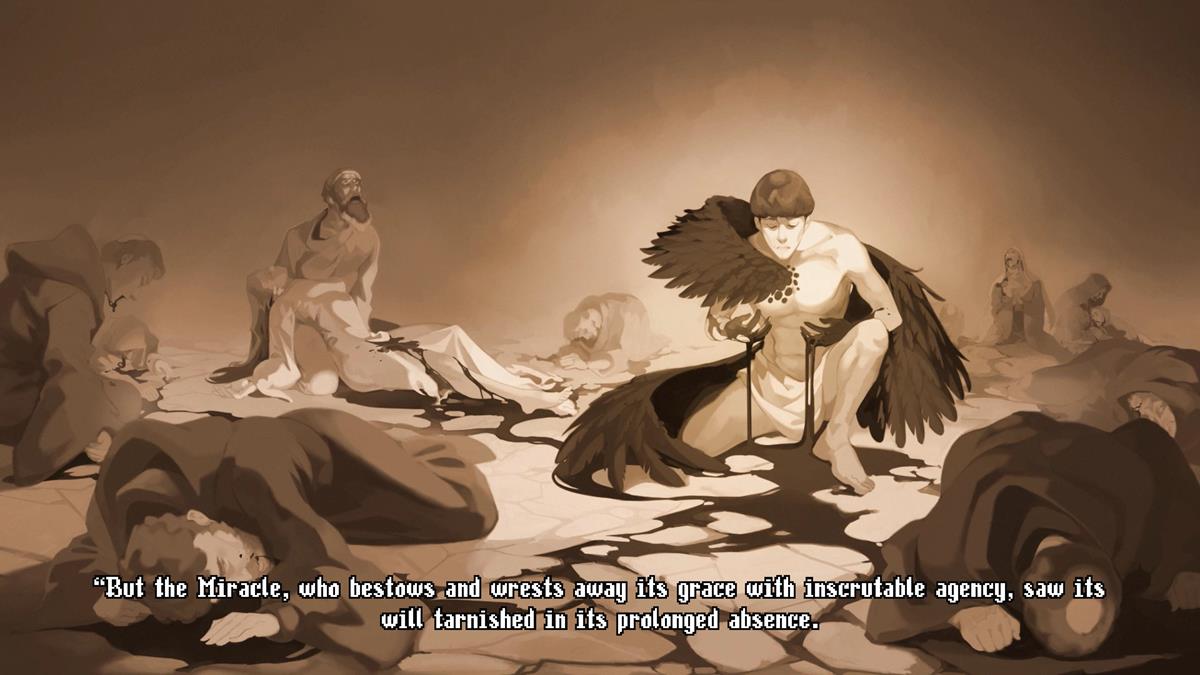
As with many games in the genre, Blasphemous 2 eschews conventional storytelling by being as vague and obtuse as possible. On one hand, I was already used to this sort of concept, so I knew what I was getting into (or so I thought). On the other, the game goes above and beyond what I would normally consider cryptic, to the point that I genuinely had no clue what was going on.
There are, of course, religious themes, which speak of the Miracle and its works. You see worshipers, hands raised and looking upon their savior, only to be afflicted. And yet, over a dozen hours in, I still have a hard time grasping what all of these themes have to do with one another. Is it an allusion to the Catholic church? Is it about the folly of man and over-reliance on blind faith? And why is there a boss that looks like Pope Benedict XVI?
I pondered these questions as I played, trying to come to grips with the type of story that Blasphemous 2 wanted to tell, especially with its style of writing and animated cutscenes. Yes, there’s Souls-like nebulousness, which we all enjoy, since the genre isn’t going to explain everything and hold your hand. And then there’s Blasphemous 2 going overboard with that idea.
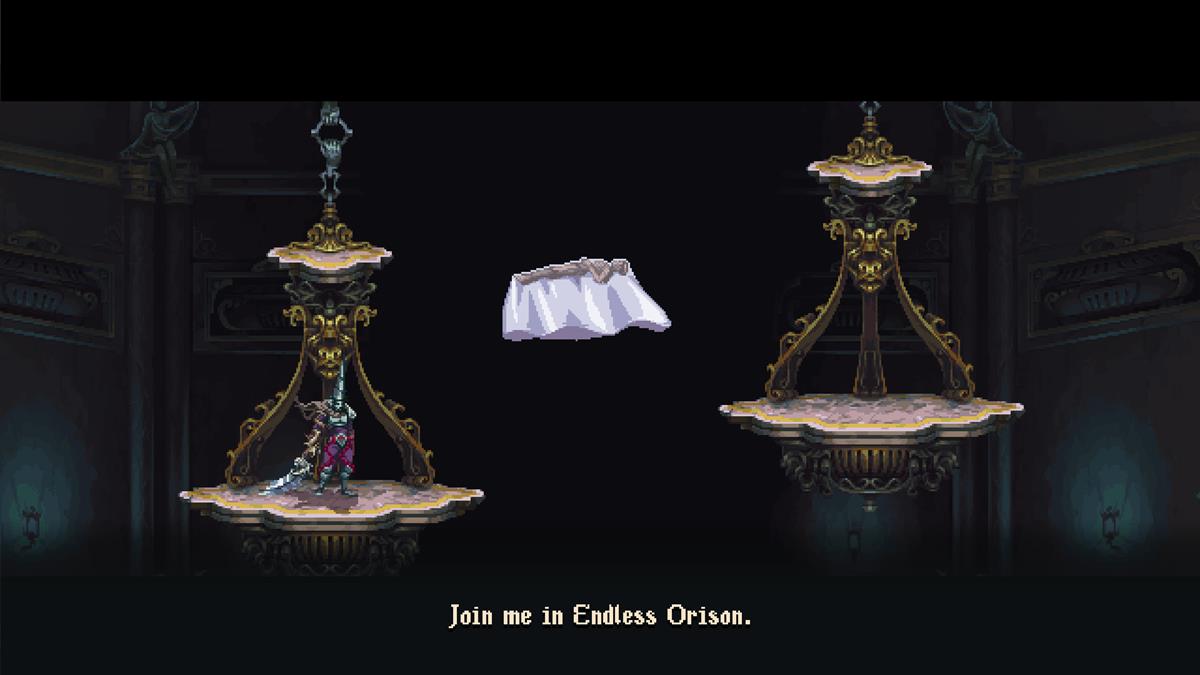
This confusion extends to Blasphemous 2‘s eccentric characters. Veterans will be familiar with the Penitent One, a helmeted knight and silent protagonist who seeks to find the truth about the Miracle. Along the way, you’ll meet people such as Montanes, a sculptor who crafts statuettes that add buffs; Medardo & Escolastico, a traveling merchant duo; a lady who cuts her entire arm when you increase your HP and flasks; a giant hand that sells items; an old couple who is having dinner, though they’re both dead, but also not dead (what’s going on?); and all sorts of strange personages.
These characters are certainly memorable, but their presence, as well as the way they’re written, left me befuddled. At one point, I met a one-eyed nun who simply said: “Find sisters.” A long while later, well after I had explored numerous zones, she still had the same dialogue. Admittedly, I probably haven’t found one of her sisters yet, and I asked myself if they were integral to the story.
Likewise, in another instance, I gave a coin to a stagecoach, which took me to a completely different area. Surprisingly enough, I couldn’t find a way to use the same stagecoach, as I had no extra coins. However, the stagecoach remained in the same location, which made me wonder if I’m supposed to keep coming back to the same spot — and for what?
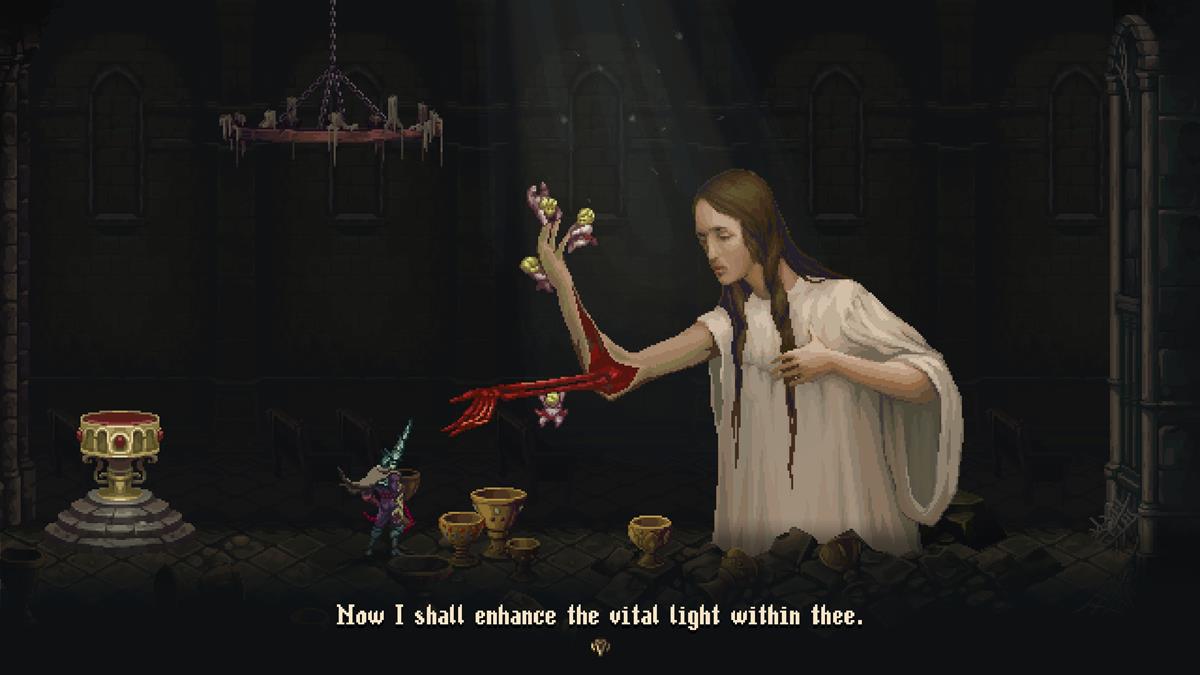
This was further compounded by the fact that Blasphemous 2 gives you three weapons to choose from at the start: a giant flail, a sword, and dual-wielded rapiers. Naturally, I chose the flail because it dealt the most damage. From there, I was tasked with eliminating three bosses, all of whom had their locations marked on the map. Little did I know I wasn’t supposed to go to those places yet, since I still had to find the two weapons I didn’t pick earlier. Was this task ever mentioned? I don’t recall. Apparently, these weapons provided additional traversal methods, such as passing through mirrors and destroying walls made of flesh.
Once I finally obtained them, I was treated to Blasphemous 2‘s platforming puzzle mechanics. These consist of hitting bells several times to make platforms appear, passing through mirrors or flesh walls, and hitting a switch to slide through a gate. To be fair, the Metroidvania genre does have its share of platforming intricacies. But, again, it’s as though Blasphemous 2 went overboard with these segments. The sheer number alone marred my appreciation of puzzles and challenges. How can I if there were too many of them in every zone?
Still, my Blasphemous 2 experience wasn’t all that bad, to be honest. The first facets that caught my eye were the visual detail and atmosphere. Given the religious and horror themes, I found myself captivated upon reaching certain zones. There are dark crypts and sand-filled temples with exploding mummies, as well as brightly-lit cathedrals and castle battlements populated by hulking knights. I noticed how these areas were beautifully rendered with loving care, further complemented by some of the most haunting melodies I’ve had the pleasure of listening to in a game.
The same can be said when it comes to elaborate level design and interconnectivity. Although the puzzle platforming mechanics can get too repetitive, there’s always an incentive to check every nook and cranny, especially once you’ve discovered abilities like the double jump, air dash, and what I’ll simply call as the “cherub hook.” Naturally, I was amazed at how these levels and zones were connected as new paths opened up.
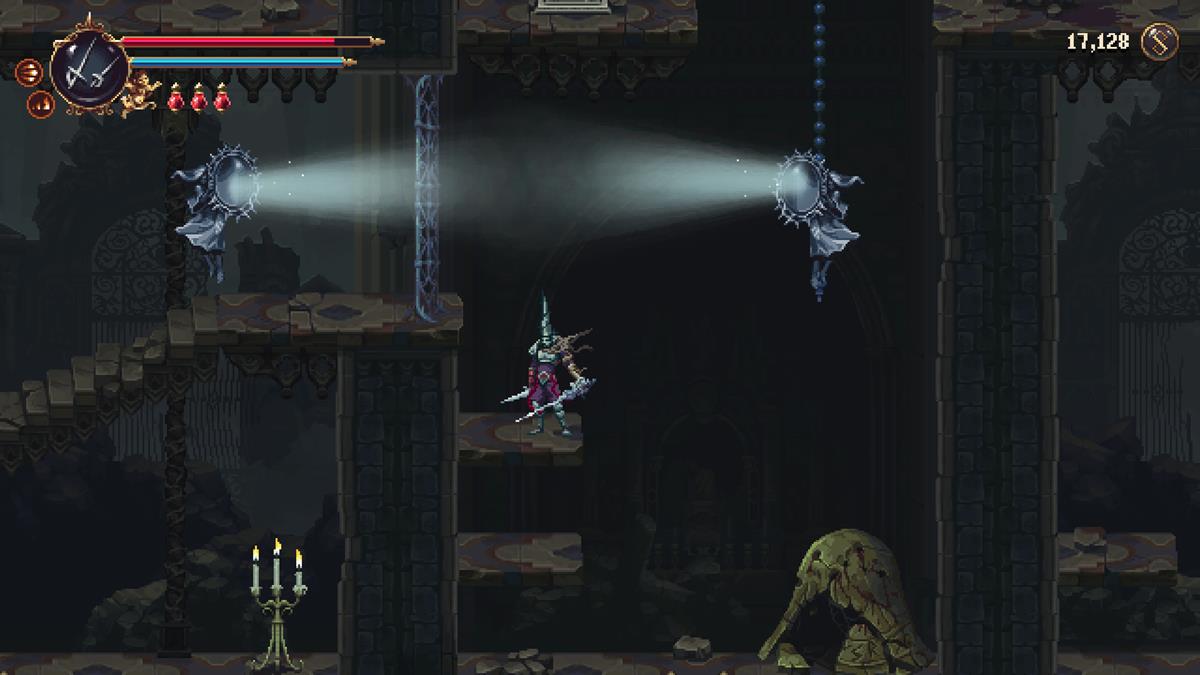
The enemies and bosses, too, are memorable. There are locations where you’re locked inside a room, and you have to eliminate multiple hostiles to earn a reward — or just to get out. In one instance, I had to eliminate a foe while riding a moving elevator. In another, there was a boss with simple attacks that were easily telegraphed. I had a feeling that there would be a second phase, but I was surprised that it also led to a third phase.
These combat challenges were certainly welcome, given that Blasphemous 2 isn’t for the squeamish. Enemies are relentless, and you can find yourself trapped or unable to move. Parries and deflections need to be perfectly timed, lest you get punished for your mistakes. Weapons can also be upgraded to unlock new skills, such as ground explosions or magic-infused slashes. And, naturally, there’s a lot of gore. Some foes explode into a messy or gooey pulp. Likewise, you can execute those that you’ve already stunned, triggering a brutal finisher animation.
The first few hours can certainly turn off newcomers, owing to how the narrative is presented. However, once everything clicks, you’ll be taking out enemies in droves, eager to discover a new secret or battle the next boss.
Blasphemous 2 Review — The Bottom Line
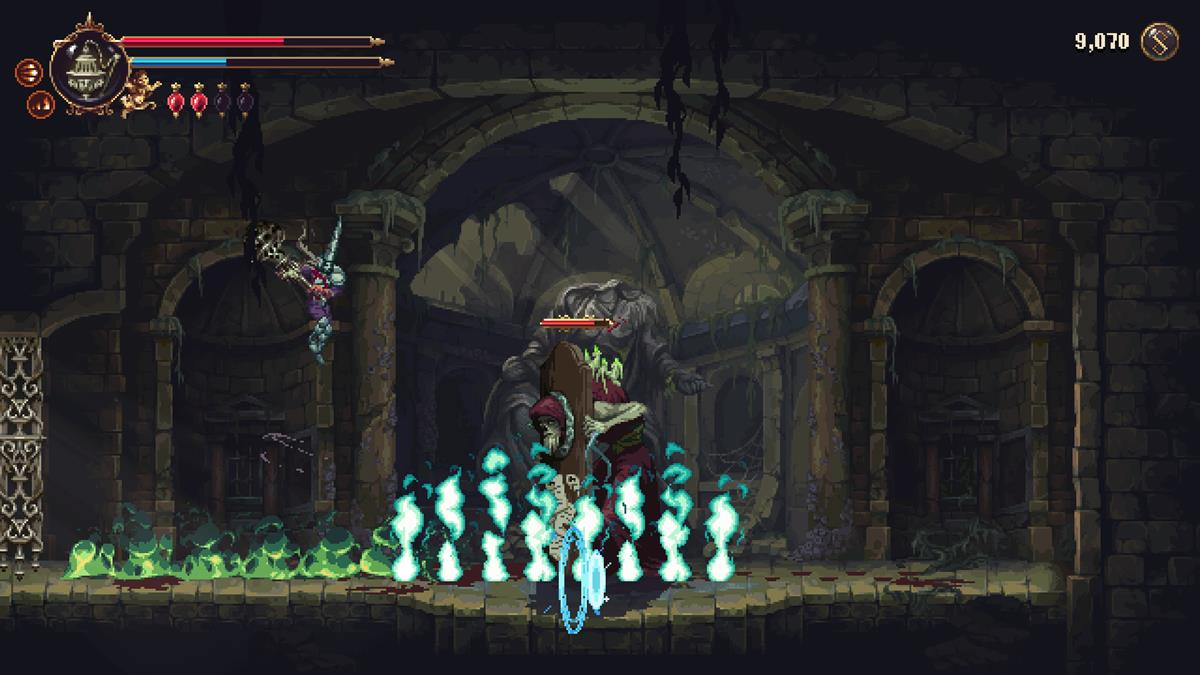
Pros
- Captivating visual design and atmosphere.
- Amazing, hauntingly beautiful music that matches each zone.
- Combat is quite challenging, which is great for any game in this genre.
- A lot of secrets to discover once you’ve unlocked all abilities.
Cons
- Notoriously cryptic and confusing story that’s hard to follow.
- Poorly written supporting characters with vague tasks and roles.
- Excessive use of the same puzzle mechanics, making exploration and platforming tedious.
Blasphemous 2 is a challenging Souls-like Metroidvania, with a top-notch atmosphere. Unfortunately, it will also challenge your patience, given its confusing plot, intentional vagueness, and repetitive use of the same puzzle platforming mechanics.
[Note: Team17 provided the copy of Blasphemous 2 used for this review.]







Published: Aug 17, 2023 08:00 am